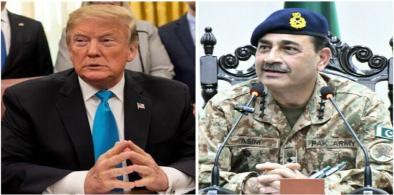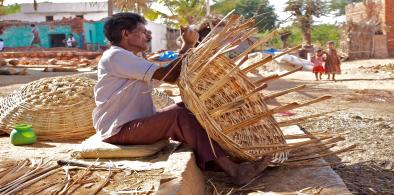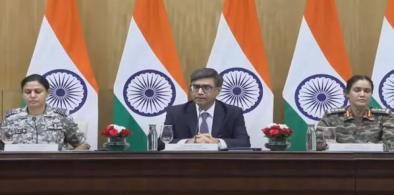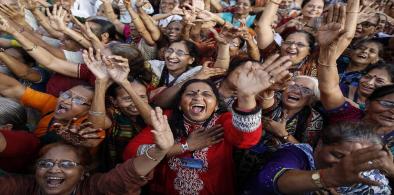The long road to the ‘Right to Health’ in India
Clearer commitments and standards on access and quality, making oversight and redressal mechanisms more participatory, and allocating adequate financial resources alone would make the right to healthcare to all citizens a reality.

September 23 in many senses is a landmark day in the context of India’s long and winding road to treating healthcare as a fundamental right. That was the day a right-to-health bill was tabled in the Rajasthan legislative assembly to provide free the full range of health services at public health facilities to all persons in the state of Rajasthan as a matter of right. While it was expected to be passed the next day, the bill has been forwarded for review to a select committee on the suggestion of some members, including some from the ruling party.
By an earlier administrative order, the government of Rajasthan had already made all the services, including diagnostics, procedures, in-patient and out-patient, free at all public health facilities. The ground had been set even before the bill came up and is now on its way to being enshrined into law.
The bill rightfully brings back the focus on public health facilities. There has been a growing policy discourse that public facilities do not deliver, that most people in any case seek healthcare from private facilities, and therefore public facilities should be privatised. An earlier proposal by Niti Ayog to privatise district hospitals for the care of non-communicable diseases is a case in point.
Public health vs privatisation
The argument is flawed for many reasons. Firstly, most rural populations in India continue to be dependent on government facilities for most critical healthcare needs: for example, in rural Rajasthan, 98 per cent of childhood vaccination, 70 per cent of contraception, and 79 per cent of institutional childbirths are conducted by government health facilities.
According to a study by researchers at the Public Health Foundation of India data, published in the British Medical Journal, the expenditure on healthcare in India pushes 55 million people into poverty every year, a testimony to the need for affordable healthcare. At the same time, public expenditure on health is declining. In 2018-19, healthcare expenditure as a percentage of GDP at an all-India level declined and fell below 1.3 per cent for the first time since 2004-2005.
On one hand, most rural populations continue to be dependent on government services, and on the other, they continue to be pushed into poverty because of expenditure on healthcare. In this context, a bill that commits to keep public services free is remarkable and is a safeguard for the poor.
Further, the bill commits to free healthcare in public facilities not only for residents but for all persons in the State. This is extremely critical for large numbers of migrants and those who may find it difficult to prove their resident status. It is therefore in the true spirit of fraternity, the minimum a State can offer to fellow Indians from other states.
Bill's commitments
The bill also commits to safeguarding people’s rights to free emergency care in all facilities including private facilities. This right (of accessing free emergency care from private hospitals) though is restricted to residents and does not apply to all persons in Rajasthan.
The bill also stipulates several other rights related to patient’s rights to privacy, right to information and confidentiality. While affirming the right to access free healthcare services from all public facilities, the bill falls short on clarifying the nature of rights and obligations. What is the kind of healthcare that people will have the right to avail?
To be meaningful, healthcare needs to be affordable, accessible, responsive and of good quality. People living in remote, difficult-to-reach areas, who are in the greatest need of healthcare are not able to reach services that are far. Right to health does not mean much for them if the facilities are not guaranteed to be close to where they live.
While the bill states that the government health facilities will be made available based on distance, terrain and population density, no parameters have been laid down. It may continue to make government services inaccessible to people living in hilly and desert areas, and they may continue to fend for themselves.
Poor quality healthcare
There is clear evidence that health facilities in India, public and private, often provide poor quality and unresponsive care. Right to poor quality care does not help. It was expected that the bill would therefore commit to certain standards of quality care for government and government funded private facilities. Such standards exist, such as Indian Public Health Standards and National Quality Assurance Standards.
The bill has left the development of quality standards to subsequent rules, which makes it as much ineffective, and uncertain. The bill stipulates the formation of district and state health authorities to plan, advice and monitor and redress complaints related to the implementation of the right to health.
The district and state health authorities are led by and consist entirely of government administrators, with the token representation of two members who have “knowledge of public health or health management”. There is no representation of the employees such as medical officers and ANMs, and no representation of citizen groups such as patient networks or of civil society such as those from NGOs or CBOs or of private providers. Such an exclusion makes it a highly bureaucratic structure and does not differentiate the executive functionaries from grievance prevention and redressal functionaries.
Another significant problem with the bill is that it bars the jurisdiction of civil courts to entertain any suit related to a complaint that is within the jurisdiction of the grievance redressal body constituted under the act. This is not only unconstitutional but will restrict even the existing rights of citizens to approach the courts for issues related to their right to survival.
A landmark bill
Finally, as a common saying goes, you have to put your money where your mouth is. Rajasthan state allocates about 6 per cent of its annual state budget to healthcare, which is higher than some other States but is still clearly inadequate. The National Health Policy of 2017 recommended that states spend at least 8 per cent of their state budget on healthcare. While stating that appropriate allocations will be made in the State budget, there are no commitments to enhance or quantify this enhancement.
By guaranteeing free access to government health services in an era where there are declining government investments in healthcare and increasing reliance on private healthcare, the Rajasthan right-to-health bill is indeed a landmark bill. It marks the first definitive step in the chequered history of making health care a fundamental right of the people of India.
Clearer commitments and standards on access and quality, making oversight and redressal mechanisms more participatory, and allocating adequate financial resources alone would make the right to healthcare to all citizens a reality. The journey has only begun. At this stage, other states can learn from the provisions and omissions in this bill to draft their own right to health acts.
(Dr. Pavitra Mohan is a co-founder of Basic Healthcare Services, a Rajasthan-based non-profit that runs primary healthcare centres. Naina Seth is a research assistant at IIM, Udaipur. Views are personal. By special arrangement with The Billion Press)




















Post a Comment